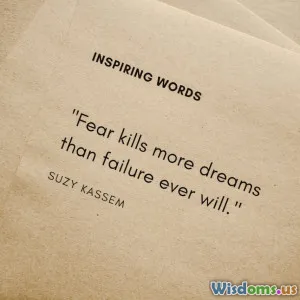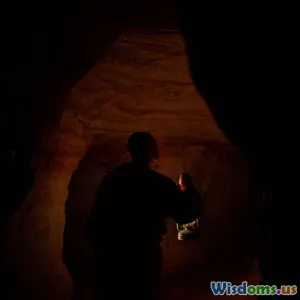
A Practical Guide to Embracing Stillness in Daily Life
9 min read Discover how to cultivate stillness in your busy life with practical tips to enhance mindfulness, reduce stress, and boost well-being. (0 Reviews)
A Practical Guide to Embracing Stillness in Daily Life
In our fast-paced, hyper-connected world, stillness can seem elusive—a rare moment when the cacophony of tasks, notifications, and distractions pauses long enough for clarity and calm to enter. Yet, embracing stillness is more than just a luxury; it is a vital practice that enhances mental health, sharpens focus, and cultivates emotional resilience. Contrary to the stereotype that stillness means inactivity or boredom, it is an active engagement with the present moment, a chance to reset and rejuvenate. This guide explores practical, evidence-based approaches to integrating stillness into your daily routine, empowering you to reclaim tranquility and enrich your life.
Understanding Stillness: More Than Mere Silence
Stillness is often misunderstood as an absence of movement or thought. However, it is better described as a state of mindful presence where the mind is calm yet alert. Neuroscience demonstrates that such moments of quiet reflection can reduce activity in the brain’s default mode network, associated with mind-wandering and anxiety, thus fostering psychological well-being (Brewer et al., 2011).
Renowned psychologist Jon Kabat-Zinn emphasizes, “Mindfulness is paying attention in a particular way: on purpose, in the present moment, and nonjudgmentally.” Stillness acts as the foundation for this awareness by suspending the usual rush of mental chatter.
Practical Strategies to Embrace Stillness
1. Start with Micro-Moments of Pause
The busy schedule often makes the idea of 'finding time' daunting. However, stillness can be experienced in brief intervals throughout your day:
- Deep breaths between meetings: Taking three deep breaths before transitioning to a new task can anchor you in the moment and reduce stress.
- Mindful waiting: Use time spent in lines or traffic jams as opportunities to observe your surroundings, tuning in to sensations and thoughts without judgment.
Research from the University of Warwick shows that even micro-breaks can significantly improve well-being and productivity (Karaffa & Koch, 2020).
2. Engage in Mindful Movement Practices
Stillness isn’t confined to sitting quietly; it can be embraced through deliberate, slow movement. Yoga, Tai Chi, and Qigong are excellent examples:
- These practices synchronize breath with movement, cultivating an inner stillness even amid physical activity.
- A study published in the Journal of Alternative and Complementary Medicine (2017) found consistent yoga practice reduces anxiety and improves quality of life.
Integrating gentle, mindful movements daily helps bridge the gap between stillness and action.
3. Create a Dedicated Stillness Ritual
Designating a consistent time and place for stillness reinforces the habit:
- Begin with 5–10 minutes of seated meditation or quiet contemplation.
- Use guided meditation apps like Headspace or Calm, which provide structured sessions tailored to different experience levels.
- Dim the lights, eliminate digital distractions, and perhaps use a candle or soft music to deepen sensory calm.
This ritual signals to your nervous system that it's safe to relax and detach.
4. Cultivate Gratitude and Observational Awareness
Engaging stillness with intentional awareness transforms it from passive solitude into active introspection. For instance:
- Maintain a gratitude journal where you jot down moments of appreciation each day.
- Practice "noticing" exercises where you focus on colors, textures, sounds, or smells around you.
These methods enhance the capacity to find joy and meaning in simpler experiences, offsetting overstimulation.
5. Limit Digital Noise
Smartphones and social media can intrude relentlessly. Experts recommend deliberate technology boundaries to protect your stillness:
- Designate technology-free zones or periods, such as during meals or the first hour after waking.
- Employ app usage trackers to monitor and reduce screen time.
- Opt for fewer but more meaningful digital interactions instead of frenetic scrolling.
This digital discipline clears mental clutter and provides fertile ground for stillness.
6. Embrace Nature as a Stillness Ally
Spending time outdoors supports psychological restoration. The biophilia hypothesis suggests humans possess an innate affiliative tendency toward nature:
- According to a 2015 study in the Proceedings of the National Academy of Sciences, spending 20 minutes in a natural setting significantly reduces cortisol levels, a biological marker of stress.
- Even urban parks or vacant gardens can offer pockets of calm and sensory grounding.
Regularly grounding yourself in the natural world reframes your relationship with time and mental quiet.
Overcoming Common Challenges
Despite its benefits, embracing stillness can feel uncomfortable. People often report restlessness or difficulty silencing mental chatter. Here are approaches to ease this transition:
- Be patient and nonjudgmental: As with any skill, stillness develops gradually. Celebrate small successes rather than expecting perfection.
- Use focal points: Concentrate on a mantra, breath, or physical sensation to anchor wandering thoughts.
- Shift perspective: Rather than resisting distraction, observe it with curiosity, gently redirecting attention back to the still moment.
Real-Life Transformations: Case Studies
Sarah’s Story: From Anxiety to Inner Balance
Sarah, a 35-year-old teacher, struggled with chronic stress and insomnia due to constant multitasking. Introducing five minutes of morning meditation and mindful breathing progressively reduced her anxiety levels. She reported improved sleep quality and a deeper sense of control during hectic days.
Mark’s Experience: Digital Detox and Presence
Mark, an IT consultant, found his mental clarity restored after establishing evening technology curfews. The deliberate reduction in screen time allowed him to rediscover the joy of reading and reflective journaling, boosting his creativity at work.
Both examples illustrate how accessible and transformative stillness practices can be.
Conclusion: Stillness as a Daily Life Catalyst
Stillness is not an escape from modern living but a powerful tool to navigate it with grace. By integrating micro-pauses, mindful movements, nature immersion, and digital discipline into your routine, you equip yourself to meet daily challenges with calm focus and emotional resilience.
The proven benefits of stillness—reduced stress, enhanced cognition, improved mood—make it a worthy pursuit. Begin small, adapt as you learn, and watch how these pockets of tranquility redefine your relationship with time, productivity, and self-awareness. Your journey toward embracing stillness can unlock profound inner peace and well-being—one mindful pause at a time.
References
- Brewer, J.A., et al. (2011). Meditation experience is associated with differences in default mode network activity and connectivity. Proceedings of the National Academy of Sciences, 108(50). https://doi.org/10.1073/pnas.1112029108
- Karaffa, K.M., & Koch, L.M. (2020). Micro-breaks in the workplace: Worker well-being and productivity. University of Warwick Well-being Institute Publications.
- Streeter, C.C., et al. (2017). Effects of yoga on the autonomic nervous system, gamma-aminobutyric-acid, and allostasis in epilepsy, depression, and post-traumatic stress disorder. Journal of Alternative and Complementary Medicine, 13(3).
- Bratman, G.N., et al. (2015). Nature experience reduces rumination and subgenual prefrontal cortex activation. PNAS, 112(28), 8567-8572.
Embrace stillness today—because your mind and body deserve moments of calm amid the whirlwind.
Rate the Post
User Reviews
Popular Posts


















